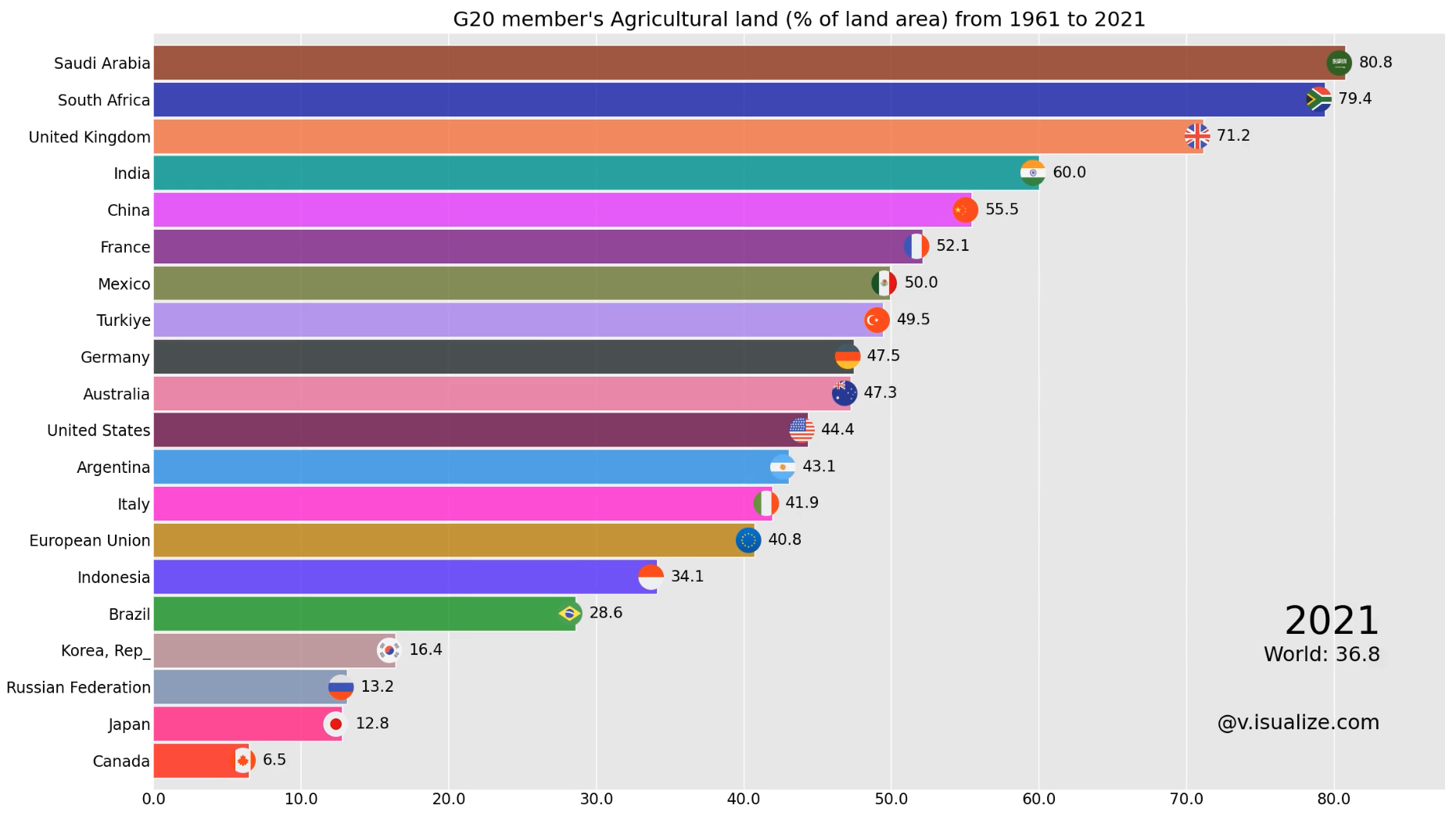Agricultural land refers to the share of land area that is arable, under permanent crops, and under permanent pastures. Arable land includes land defined by the FAO as land under temporary crops (double-cropped areas are counted once), temporary meadows for mowing or for pasture, land under market or kitchen gardens, and land temporarily fallow. Land abandoned as a result of shifting cultivation is excluded. Land under permanent crops is land cultivated with crops that occupy the land for long periods and need not be replanted after each harvest, such as cocoa, coffee, and rubber. This category includes land under flowering shrubs, fruit trees, nut trees, and vines, but excludes land under trees grown for wood or timber. Permanent pasture is land used for five or more years for forage, including natural and cultivated crops. (World Bank)
Reasons behind trends:
- Outline: Trends in agricultural land use from 1961 to 2022 among G20 countries show stable or declining use due to urbanization, technological advancements, economic shifts, and increased emphasis on sustainable practices and environmental conservation.
- Saudi Arabia and South Africa’s Higher Values: Saudi Arabia’s higher values are driven by government investments, advanced irrigation systems, and desert agriculture innovations, while South Africa benefits from diverse farming, favorable climates, and strong government support.
- Characteristics of Other Countries: Other G20 nations generally show stable or reduced agricultural land use due to urban expansion, shifts towards industrial and service sectors, improved farming technologies, and policies promoting sustainability and environmental protection.
Source: THE WORLD BANK, G20



Comments